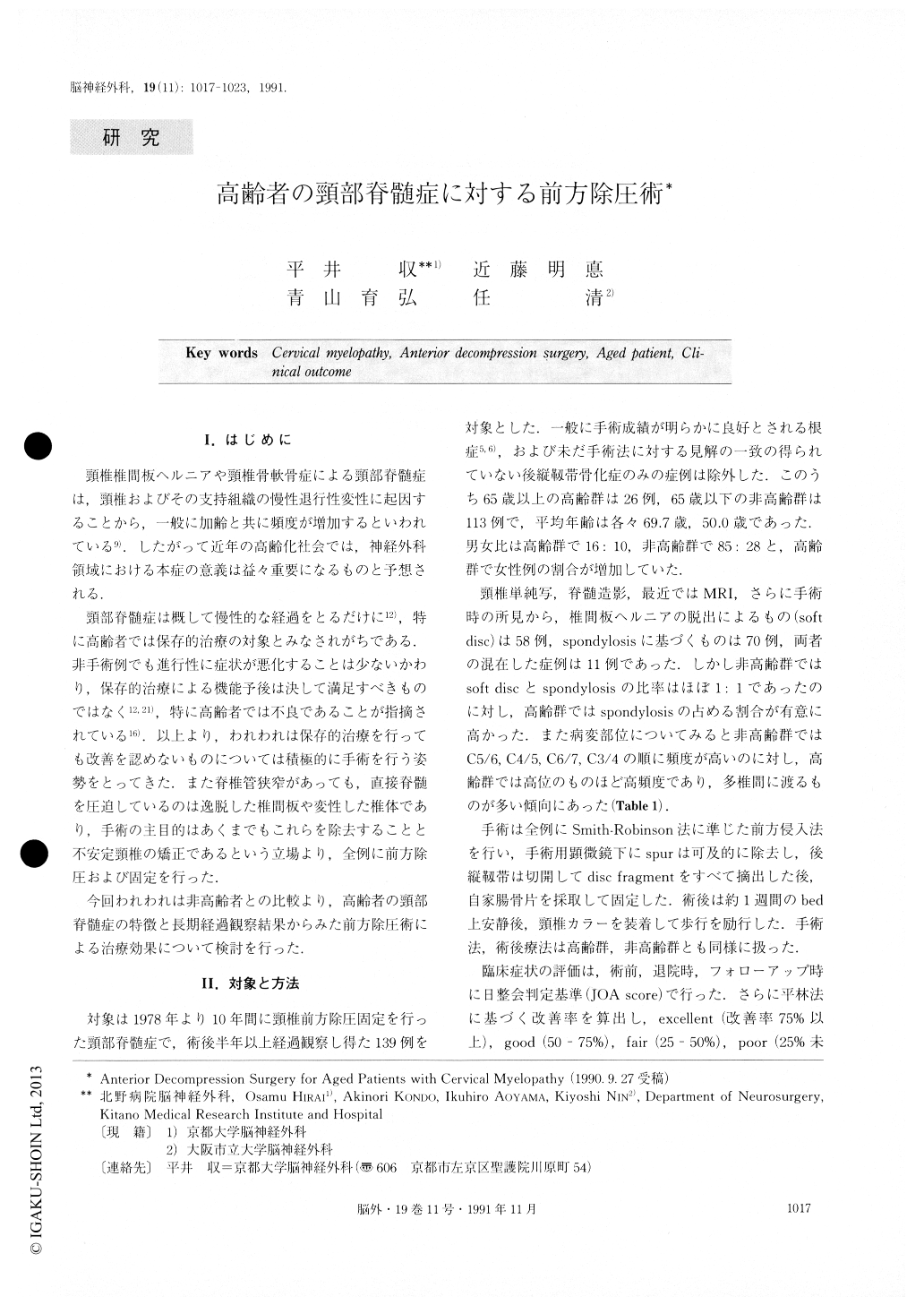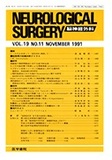Japanese
English
- 有料閲覧
- Abstract 文献概要
- 1ページ目 Look Inside
I.はじめに
頸椎椎間板ヘルニアや頸椎骨軟骨症による頸部脊髄症は,頸椎およびその支持組織の慢性退行性変性に起因することから,一般に加齢と共に頻度が増加するといわれている9).したがって近年の高齢化社会では,神経外科領域における本症の意義は益々重要になるものと予想される.
頸部脊髄症は概して慢性的な経過をとるだけに12),特に高齢者では保存的治療の対象とみなされがちである.非手術例でも進行性に症状が悪化することは少ないかわり,保存的治療による機能予後は決して満足すべきものではなく12,21),特に高齢者では不良であることが指摘されている16).以上より,われわれは保存的治療を行っても改善を認めないものについては積極的に手術を行う姿勢をとってきた.また脊椎管狭窄があっても,直接脊髄を圧迫しているのは逸脱した椎間板や変性した椎体であり,手術の主目的はあくまでもこれらを除去することと不安定頸椎の矯正であるという立場より,全例に前方除圧および固定を行った.
Abstract
One hundred and thirty-nine patients with cervical myelopathy who underwent anterior decompression surgery were reviewed to determine the characteristics and surgical outcome in 26 elderly patients over the age of 65. The mean age of the aged group was 69.7 and that of the remaining 113 patients was 50.0. Extensive spur removal and interbody fusion with iliac bone graft were performed in all patients. Evaluation of clinical grades was based on the Japan Orthopedic Association Score (JOA score) on admission, at discharge and at the time of follow-up (mean 26.8 months) . The im-provement rate was calculated from Hirabayashi's for-mula at each point.
Preoperatively, the mean duration of illness was lon-ger and the mean JOA score was significantly lower in the aged group. Furthermore, low incidence of soft disc and multi-level lesions were characteristic for the aged. Final JOA score increased from 8.2 to 13.0 in the aged group, while that in the non-aged group increased from 10.5 to 14.8. These differences were statistically signifi-cant at each point. Excellent and good results which were designated as an improvement rate of 50% or more were obtained in 73.1% of the aged group, and in 79.6% of the non-aged group. Postoperative complica-tions were slightly more frequent in the aged group, all of which, however, were dislocation of bone graft seen in 3 patients.
As compared with the non-aged group, poorer surgic-al outcome in the aged group was attributed to preop-erative poor clinical condition, long duration of preop-erative symptoms, low incidence of soft disc herniation and multi-level lesions which were characteristic fea-tures for the aged patients. However it should be stres-sed that about three quarters of the aged patients en-joyed an improvement rate of 50% or more. This acceptable result should encourage us to perform ante- rior decompression surgery even for aged patients with cervical myelopathy, since clinical improvement lastingeven for several years would be valuable for them, con-sidering their limited life expectancy.

Copyright © 1991, Igaku-Shoin Ltd. All rights reserved.


